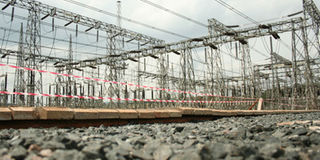UMA wants government to head EA power pool

Power lines at Bujagali. Many countries have underdeveloped transmission networks. FILE PHOTO
What you need to know:
Sigificance. The regional power pool is expected to secure power supply to member states at the least possible cost.
Uganda’s manufacturers want the government to spearhead the “activation” of the East African Power Pool (EAPP). They say this would position Uganda to tap cheaper power from nearby countries that enjoy the economies of scale in power generation.
At $0.03 per unit compared with Uganda $0.12 per unit, Ethiopia has the lowest electricity tariff for manufacturers in the region, which if tapped, would lower production costs and, consequently, the prices of many manufactured goods.
UMA chairman Amos Nzeyi, said in a September 23 letter to Dr Benon Mutambi, the chief executive officer, Electricity Regulatory Authority (ERA), the activation could be done in the short term.
“The Kenyan approach to the power cost challenge resonates well with the need to have Uganda push for the activation of the East African Power Pool,” said Mr Nzeyi. “Once the East Africa Power Pool is operational, which is very much possible even in the short to medium term, the East African region shall have a large pool from which to source for power, which would eliminate the expensive thermal power.”
Uganda was from 2005 to 2011 was weighed down by insufficient power with growing unmet demand amidst a drop in power generation, which emphasised the need to join such a pool.
However, according to the United Nations Commission for Africa (2005), there are challenges to activating power pools. The commission says many countries have underdeveloped transmission networks and find it difficult to mobilise funds for power projects.
It adds that there is lack of trust and confidence among the pool members.
In spite of such challenges, The EAPP Master Plan and Renewable Power Options (June 2013), says the EAPP would secure power supply to member states at the least possible cost.
This would be achieved by facilitating and coordinating power exchange among the member power utilities. To that effect, by 2016, Kenya plans to interconnect its grid with Ethiopia, the country with half (16, 204MW) of the 10 countries hydropower capacity.
EAPP says the size of most of the national systems in EAPP region is a constraint to development of large-scale grid connected wind/solar generation technologies.




